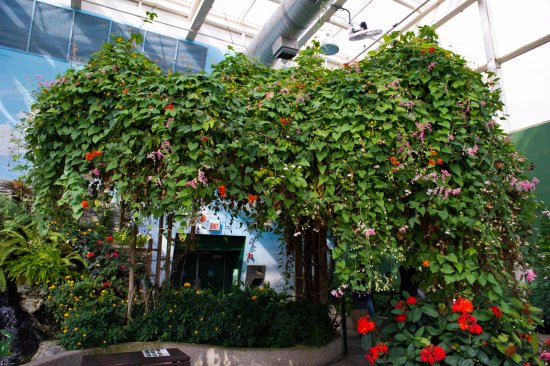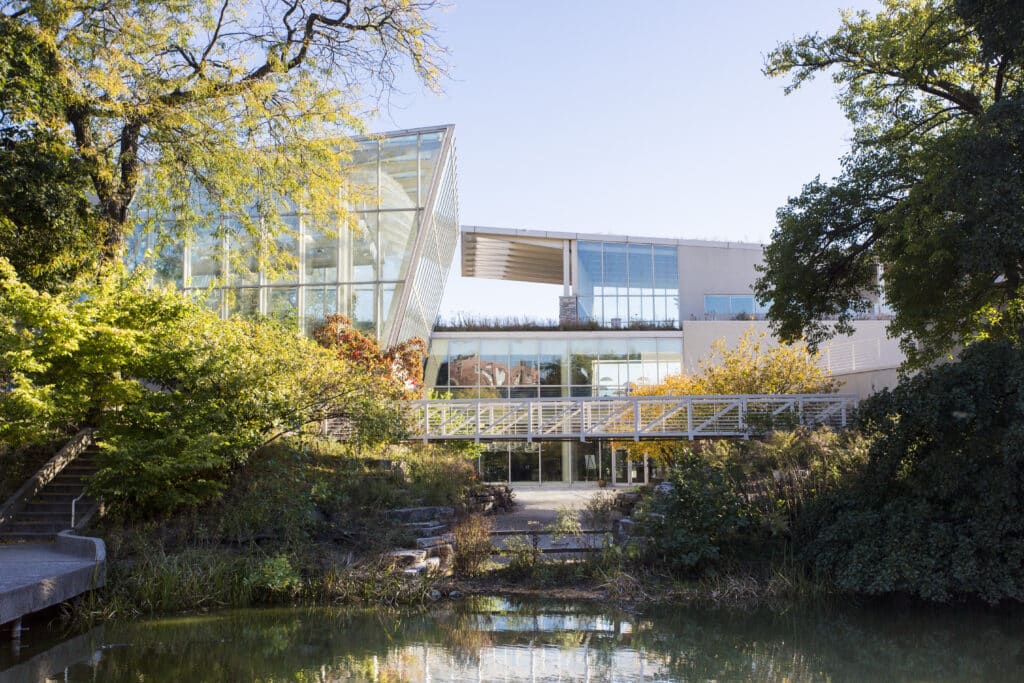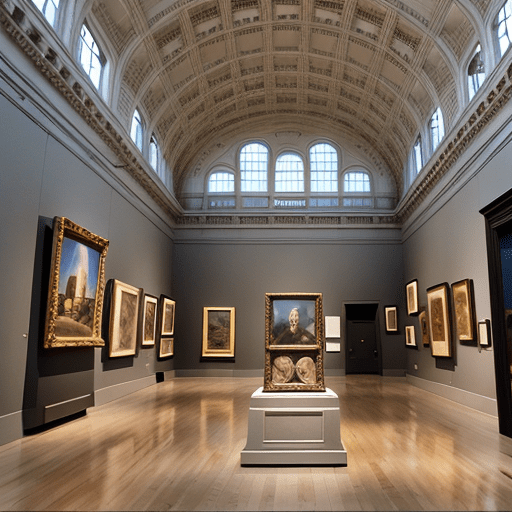Why the Peggy Notebaert Nature Museum is a Must-Visit in Chicago
The Peggy Notebaert Nature Museum is a fantastic place for nature enthusiasts and scholars alike, boasting a rich history that spans over 165 years. As a part of the Chicago Academy of Sciences, this esteemed institution has dedicated itself to bridging the gap between humans and the natural world, fostering a deep appreciation for the wonders of our environment.
This is a must-visit museum in Chicago, not only for its architectural beauty but also due to its immersive exhibits, educational programs, and unwavering commitment to conservation and environmental education. It serves as a vibrant hub for individuals of all ages to explore, learn, and connect with nature amidst the bustling urban landscape, reinforcing its position as one of Chicago’s premier museums.
History and Foundation
The Peggy Notebaert Nature Museum, a cornerstone of nature education in Chicago, has a storied history that traces back to 1857. Founded by a group of nature enthusiasts and amateur scientists, the Chicago Academy of Sciences, now known as the Peggy Notebaert Nature Museum, initially opened its doors to the public in 1869, establishing itself as Chicago’s first public museum. This move underscored its commitment to education and community engagement, a principle that remains at its core today.
- Transition and Growth:
- 1857: Establishment of the Chicago Academy of Sciences.
- 1869: Opens as Chicago’s first public museum.
- 1870: Becomes the fourth largest natural history museum in the nation.
- 1871: Rebuilds after the Great Fire of Chicago, under the guidance of notable figures like William Stimpson.
- Significant Milestones:
- 1894: Moves to the Matthew Laflin Memorial Building in Lincoln Park.
- 1997: Breaks ground for the new building, named after Peggy Notebaert following a significant donation.
- 1999: Opens doors to the public, featuring the Judy Istock Butterfly Haven.
The museum’s relocation in 1999 to a building designed by Perkins & Will, Inc., marked a new era. This move not only provided a modern space for its exhibits and collections but also reinforced its mission to connect people with nature in a bustling urban environment. The Peggy Notebaert Nature Museum continues to be a beacon of education and conservation, drawing visitors from all over to explore the natural world within the heart of Chicago.
The Unique Architecture of the Museum

The Peggy Notebaert Nature Museum stands as a testament to the harmonious blend of natural and human-made environments. Its unique design, covering an expanse of 73,000 square feet, serves not just as a building but as an educational tool and a metaphor for the intricate relationship between humanity and nature. The entrance, crafted through an incision in the landscape, invites visitors into a space that emphasizes an organic relationship with its surroundings.
- Landscape Integration: The museum’s architecture goes beyond mere aesthetics; it’s an integral part of its educational mission. The landscape around the building is meticulously designed to recreate several natural communities:
- Pond
- Woodland slope
- Native prairie on the south-facing slope
This design choice reflects the museum’s commitment to filling the void created by urban growth, offering visitors an authentic connection to nature amidst the city’s hustle and bustle.
By embodying the interdependence of natural and human-made environments, the Peggy Notebaert Nature Museum not only educates but also inspires its visitors. Through its thoughtful design and landscape, it ‘s a model of conservation and understanding, urging us to ponder our place within the natural world.
Exhibits and Collections
At the heart of the Peggy Notebaert Nature Museum’s appeal are its diverse and immersive exhibits that cater to visitors of all ages. Among these, the iconic Judy Istock Butterfly Haven stands out, providing a mesmerizing experience with over 40 species of exotic butterflies fluttering in a 2,700 square foot greenhouse. This exhibit, alongside others like The Ancient Waters of Lake Michigan and Nature’s Lunchbox, showcases the intricate relationship between humanity and nature, emphasizing the museum’s commitment to education and conservation.
- Interactive Exhibits and Play Spaces:
- The museum features innovative walk-through dioramas and an interactive environmental crisis center.
- For younger visitors, interactive play spaces offer hands-on learning experiences.
- Educational Programs and Collections:
- With over 290,000 objects, including natural history specimens and historical artifacts, the museum’s collection is a treasure trove for researchers and educators alike.
- Educational programs focus on the natural history of the Chicago region, offering valuable insights for both children and adults.
The Peggy Notebaert Nature Museum not only serves as a repository of knowledge but also as a vibrant center for hands-on science education, outpacing other Chicago museums in its offerings. Through its exhibits, collections, and programs, the museum fulfills its mission to engage and educate visitors about the wonders of urban nature, making it a cornerstone of Chicago’s cultural and educational landscape.
Educational Programs
The Peggy Notebaert Nature Museum excels in offering a comprehensive suite of educational programs that cater to a wide audience, from students and teachers to families and conservation enthusiasts. Central to its mission, the museum serves as an urban gateway, inviting exploration of the natural world through a variety of engaging and hands-on experiences.
- In-School and Out-of-School Programs:
- Science on the Go (K-8th): Brings museum educators into classrooms to provide interactive lessons on local ecosystems.
- Nature on the Go (Pre-K to 12th): Offers mobile workshops that explore nature’s wonders.
- Science Enrichment Series (1st to 8th): A 6-lesson program focusing on local species and habitats, fostering a deep connection with nature.
- Virtual Field Trips & Workshops (Pre-K to 12th): Allows students to engage with natural sciences remotely, ensuring accessibility for all.
- Educational Resources for Teachers and Parents:
- Teacher Professional Development: Enhances science teaching skills with workshops and resources.
- Wonder Workbooks: Encourage exploration of nature and science, available for various age groups.
- Sustainability Resources: Guides on making sustainable choices, reflecting the museum’s commitment to conservation.
The museum’s dedication to education extends beyond traditional settings, offering unique experiences like Nature Museum Camp for children aged 4 to 9, where they can develop social and science skills in a fun and immersive environment. Through these diverse programs, the Peggy Notebaert Nature Museum fosters a lifelong love for nature and science, making it a cornerstone of educational enrichment in the Chicago area.
Contributions to Science and Nature
The Peggy Notebaert Nature Museum, through the Chicago Academy of Sciences, plays a pivotal role in conservation efforts and community science, underlining its commitment beyond being a mere repository of knowledge. The museum’s scientists actively engage in conservation work that has a significant impact on local wildlife, including initiatives for Blanding’s turtles and regal fritillary butterflies. These efforts are crucial for the preservation of these species and serve as a testament to the museum’s dedication to environmental stewardship.
- Conservation and Community Science Initiatives:
- Blanding’s Turtles: Involvement in habitat preservation and population monitoring.
- Regal Fritillary Butterflies: Efforts aimed at understanding and supporting their habitats.

The museum extends its mission to the public through several community science projects. These initiatives not only foster a deeper understanding and appreciation of nature among the community but also contribute valuable data to conservation research. Participants have the opportunity to engage with projects focusing on:
- Butterflies and Dragonflies: Monitoring populations and migrations.
- Frogs: Studying local frog species and contributing to their conservation.
Moreover, the museum’s dedication to conservation research, maintenance of collections and archives, and participation in sustainability initiatives have garnered attention from various news outlets, highlighting its role as a leader in environmental education and conservation in the Chicago area.
Visiting Information and Future Exhibits
Planning a visit to the Peggy Notebaert Nature Museum is easy, ensuring a hassle-free experience for those eager to explore the wonders of nature in Chicago. Here’s what visitors need to know:
General Information:
- Location: 2430 N. Cannon Dr., Chicago, IL 60614
- Hours: Open daily from 10 am to 4 pm, including weekends.
- Closed Dates: May 3, November 28, December 25, 2024.
Admission Fees:
- Adults: $15 (IL Resident), $17 (Out of State)
- Seniors (60+): $10 (IL Resident), $12 (Out of State)
- Students: $10 (IL Resident), $12 (Out of State)
- Children (3-12): $8 (IL Resident), $10 (Out of State)
- Children under 2: Free
- Special Admissions:
- Illinois teachers, active-duty service members, veterans, and families: Free.
- Museums for All: $1 with EBT Card.
- ASTC Passport and Regional Museum Reciprocal Admission: Benefits vary.
Membership & Benefits:
- Early access on Sundays and Tuesdays starting at 9 am.
- Discounts for groups of 10 or more with advance registration.
- Access to special programming and events.
Accessibility & Amenities:
- Wheelchair accessible, with strollers available for rent.
- Designated eating areas and nursing-friendly.
- Coat check available for a nominal fee.
For the most up-to-date visiting information, future exhibits, and to purchase tickets, visitors are encouraged to check the museum’s official website. Engaging with the museum’s diverse offerings, from daily programming like Critter Connection and Butterfly Release to special events, enriches the visitor experience, making each visit unique.
Throughout the exploration of the Peggy Notebaert Nature Museum, it becomes unmistakably clear why this institution is hailed as a cornerstone of natural history and education in Chicago. From its historical roots stretching back to 1857 to its modern-day significance as a hub for conservation efforts and environmental education, the museum presents an enriching narrative that bridges the natural world with the urban community. Its diverse exhibits, educational programs, and commitment to science and nature seamlessly integrate to provide both an informative and immersive experience for visitors of all ages. Indeed, the museum not only serves as a repository of knowledge but also as a vibrant center advocating for the interconnectedness of humans and the environment.
As visitors wander through its architecturally significant halls, engage with interactive exhibits like the enchanted Judy Istock Butterfly Haven, or partake in the myriad of educational initiatives designed for keen minds, the museum fulfills its mission of fostering a deeper appreciation and understanding of nature within the bustling metropolis of Chicago. The implications of its work extend far beyond its walls, promising a brighter future for conservation and environmental stewardship. In fostering a community of informed citizens and nature enthusiasts, the Peggy Notebaert Nature Museum solidifies its standing as a must-visit landmark in Chicago, embodying the essence of curiosity, conservation, and continuous learning.
FAQs
What makes the Peggy Notebaert Nature Museum suitable for adult visitors?
The Peggy Notebaert Nature Museum is a top destination for both children and adults in Chicago, offering a variety of interactive events and educational programs. Adults will find the museum’s calendar filled with upcoming events that cater to a diverse audience, including families, individual adults, and groups.
How much time is recommended to experience the Peggy Notebaert Nature Museum thoroughly? T
o get a good sense of what the Peggy Notebaert Nature Museum has to offer, you should plan to spend at least an hour to an hour and a half. This will allow you sufficient time to immerse yourself in the Judy Istock Butterfly Haven, enjoy the art exhibits, discover the Birds of Paradise, and observe the living collections in the Istock Family Look-In Lab.
What is the history of the Peggy Notebaert Nature Museum’s establishment?
The Peggy Notebaert Nature Museum was officially opened in October 1999. It was constructed over several years to provide a new and larger venue for the Academy to engage with the public. The museum continues to focus on the local environment through its exhibits, programs, and research.
Are museums a significant aspect of Chicago’s cultural scene?
Indeed, Chicago is renowned for its exceptional museums, which rank among the finest globally. The city boasts a wide array of institutions, including the prestigious Art Institute of Chicago and the Chicago History Museum, among many others. Here is a comprehensive list of museums in Chicago that cater to a variety of interests and fields.


